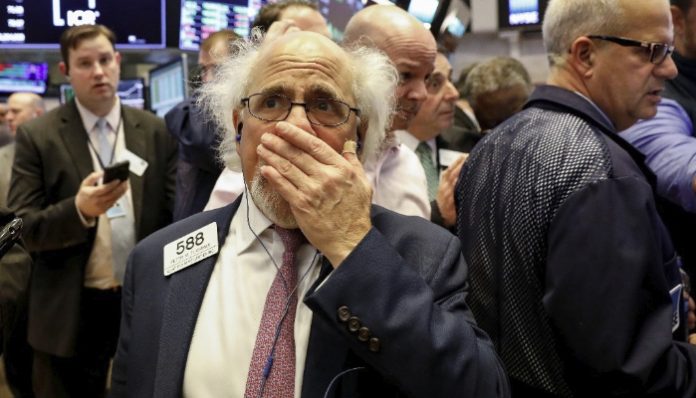Stocks are up and so are hopes of an economic re-opening. With oil rising, too, bulls have plenty to be happy about after Monday’s “flip-flop” session that started lower and finished higher.
Investors, though optimistic, remain cautious as states begin to relax lockdown measures. California, for example, will allow retailers to offer curbside service starting this Friday.
If a “second wave” of COVID-19 arrives as a result of the re-openings, bulls can kiss the rally goodbye.
But if everything goes well, stocks might even push inexplicably higher. The major indexes are less than 20% off their all-time highs and over 30% above the coronavirus crash lows despite recession-like economic data.
Some analysts, like XM’s Marios Hadjikyriacos, believe that stocks have “gotten over” COVID-19.
“Looking just at stock market indices, one could conclude that the worst has passed,” Hadjikyriacos wrote in a note on Tuesday.
“States are opening up for business again, and if crude stockpiles are indeed rising slower, then Americans are probably driving more already.”
Brian Levitt, global market strategist at Invesco, argues that the continued bullish sentiment is the result of a number of different factors.
“Investors have been waiting for a retest of the March lows, but policy support has been massive and there has been some improvement in the medical data in parts of the country,” said Levitt.
Fundstrat founder Tom Lee sees a similar situation unfolding.
“The state openings and case counts peaking, and also ‘earnings confessions’ are all acting to reduce uncertainty. This is, in our view, the primary reason stocks are drifting higher and shifted into the hands of buyers,” Lee said.
“The market was overwhelmed with sellers, causing the fastest crash ever. So we think risk/reward still favors buyers.”
Lee, who accurately predicted a $20,000 Bitcoin in 2017, has long been viewed as a “perma-bull.” Regardless of what happens, he manages to find the silver lining in the market.
Over time, that strategy certainly worked out for Lee and Fundstrat.
But it doesn’t mean the market will return to its all-time highs without pause. A healthy sell-off – something that occurs in nearly every rally – is presumed to be coming down the pipe, even if it lasts only a few sessions.
Thus far, it hasn’t really happened. Yes, equities stumbled in late April, but the true selling has yet to arrive.
Other analysts (not named Lee, Levitt, or Hadjikyriacos) are worried that a correction could be absolutely vicious once reality sinks in.
“Megacaps mask underlying rally fragility,” wrote Ken Johnson, investment strategy analyst at Wells Fargo, in a note, referencing the strong performance of the big tech firms.
“This concentration raises concerns about the rally’s long-term health and durability as it suggests that ample liquidity, rather than broadly improving fundamentals, may be fueling it.”
That “ample liquidity” – provided by the Fed’s record-breaking stimulus packages – has pumped up stocks significantly. With the cash flowing fast and free, corporations are chugging along, but at potentially great detriment to both the dollar and future share prices.
And unless the economy can get back up to speed by the end of the quarter, a bear market could result.
One that burns scores of momentum-chasing bulls when the “other shoe” finally drops.








